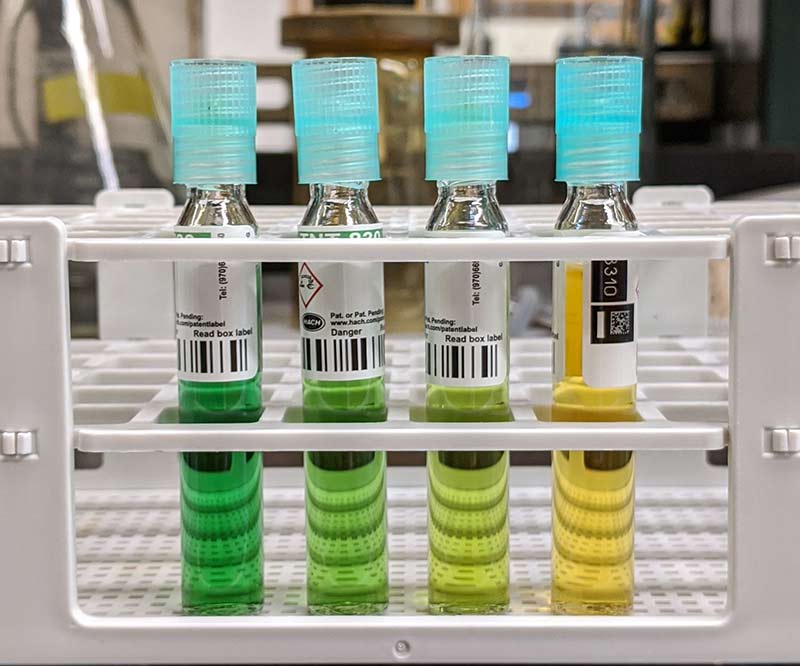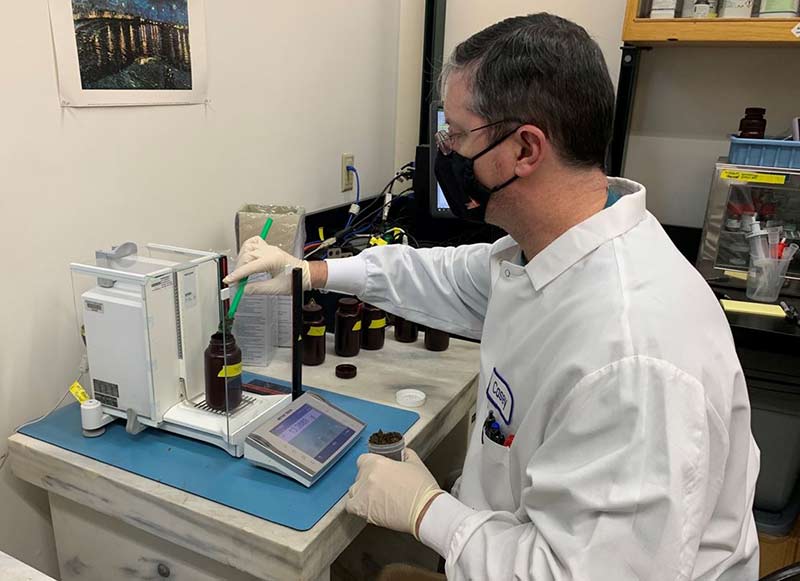Conventionals Unit
The Conventional Chemistry Unit tests natural waters, wastewater, soil, and sediment for many inorganic and organic substances. The results are used to track water quality in the Puget Sound region.
We test for over 40 inorganic (non-carbon based) and organic (carbon-based) substances that we use to help measure water quality. The results of these tests allow us to see important changes in the water bodies in our region, including Puget Sound.
Conventional Chemistry testing
Our tests measure important factors like:
- Low-level nutrients like phosphorous and nitrogen, which aquatic life need to survive.
- Turbidity, or the clarity of a water sample.
- Dissolved oxygen that is breathable by fish and other aquatic life.
- pH, a measure of the acidity of a water sample.
- Total suspended solids and total dissolved solids, which measure the amount of solid material in a water sample.

Wastewater testing
We also test public and industrial waste products for things like:
- Biochemical oxygen demand (BOD), a measure of how much oxygen bacteria need to break something down.
- Cyanide, a toxic compound produced by some industrial activities.
We also analyze freshwater, saltwater, groundwater, wastewater, soils, sediments, and biosolid samples with a variety of tests.
Most of our tests are based on traditional, hands-on chemistry methods. With modern technology, many of our tests are now automated using state-of-the-art instruments, equipment, and computers. This allows us to test more samples, faster. These instruments include nutrient analyzers that can measure trace levels of phosphorus and nitrogen. Our equipment allows us to generate results with high accuracy and precision.
Our work supports projects that improve and protect environmental and public health in our region.

The Conventional Chemistry Laboratory Unit analyzes and reports over 40,000 sample results each year.

 Translate
Translate